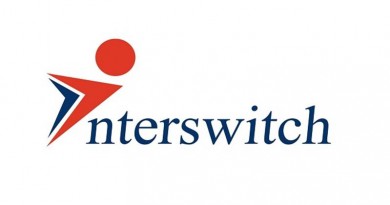How Does Blockchain Fit Into the Finance Industry?
Since the popularity of cryptocurrencies, especially Bitcoin, exploded in 2017, an increasing amount of attention has been paid to the blockchain technology that powers them. First described in 1991, then popularized by Satoshi Nakamoto, the pseudonymous creator of Bitcoin, in 2008, blockchain has since become one of the world’s fastest-growing technologies. The financial sector, in particular, has taken a massive interest in blockchain’s potential. Here’s what you should know about blockchain’s inner workings and how the technology could power the next generation of financial innovation.
How Does Blockchain Work?
At its core, a blockchain is a digital structure for the storage of data. As the name implies, blockchains are made up of smaller individual data structures known as blocks, with each block containing a certain preset amount of data. In the context of financial use, each block contains a finite volume of transaction data. Unlike standard databases, blockchains are decentralized and are made up of large networks of user nodes.
The added data security for which blockchains are so renowned comes from a combination of their structure and their decentralized nature. When a transaction takes place over a blockchain network, a majority of the nodes in that network must verify the transaction’s authenticity using algorithms that are built into the blockchain itself. Once this has occurred, that transaction is grouped together with enough other transactions to form a new block, which is then added onto the blockchain. After a block has been added, it is virtually impossible to alter, owing to the fact that every block contains its own unique mathematical signature, known as a hash, as well as the hash of the previous block. Altering even one transaction in a block would change its hash and leave obvious evidence of tampering. To retroactively change a record on a blockchain, one would need enough computing power to alter the whole blockchain at once. While not technically impossible, the cost and difficulty of doing so is far beyond the abilities of the vast majority of hackers.
The Applications of Blockchain in Finance
Since it was originally constructed to keep track of Bitcoin transactions, blockchain technology is already well-suited to the more mainstream financial sector. As a result, many uses for the technology have been proposed and explored by banks and financial institutions around the world. Among the most obvious uses for blockchain in the financial sector is facilitating faster and more affordable international money transfers. Due to their decentralized model, blockchain networks can cut out financial middlemen and facilitate direct transfers of money. This simultaneously lowers the costs added on by middlemen and reduces the amount of time it takes to transfer the money between parties. A similar concept is also being explored in the area of stock trading, where removing middlemen could reduce the settlement time on trades.
Another major change that blockchain may be set to bring about is a radical transformation in the way new businesses access capital. Because of its peer-supported node system, blockchain technology makes it easy for large numbers of users to pool money in order to fund new enterprises. Up to now, this capacity has largely been utilized by blockchain businesses themselves, but the venture capital industry is already investing heavily in the technology in hopes of one day being able to offer a distributed peer-to-peer funding model. Outside of large financial institutions, many smaller startups are also beginning to appear with the hopes of applying blockchain’s capabilities to crowdfunding projects.
More important than any other application is the potential use of blockchain technology to enhance security across the entire finance industry. With built-in authentication keys and distributed networks, blockchain can correct for some of the most critical vulnerabilities that exist in the IT infrastructure of banks today, including users who create weak passwords and centralized systems that allow attackers to gain complete control of a bank’s network. Blockchain is also ideal for maintaining accurate and immutable transaction records, eliminating both the intentional falsifications and at least some of the human errors that can corrupt traditional financial records.
Pros and Cons of Blockchain
The pros of blockchain as it relates to the finance industry are mostly centered around the security-enhancing capabilities described above. Another important advantage, however, is the technology’s ability to simultaneously allow for transparency in transactions and the increased anonymity of users who employ good privacy practices. In fact, this seemingly paradoxical set of abilities was part of what inspired the Bank of England to conduct an extensive proof-of-concept study on the possibility of using a distributed ledger to enhance transaction privacy while still allowing for central regulatory oversight.
Though the pros of blockchain may seem overwhelming, the cons are still very much present. The largest disadvantage at the moment is the fact that blockchain is still an emerging technology that is not yet fully ready for widespread implementation. With many of the world’s largest financial institutions investing heavily in the technology, though, this is a problem that will likely be solved relatively soon. Because every node in a blockchain network must perform the same set of authentication processes, blockchains are by their very nature inefficient when compared with traditional databases. Finally, though much more secure than traditional security methods, blockchain is not completely beyond being attacked. One well-known hack, called a 51 percent attack, is based on the idea of gaining control of a majority of network nodes in order to create false transaction records and make them indistinguishable from real transactions by having a majority of the network verify their authenticity.





